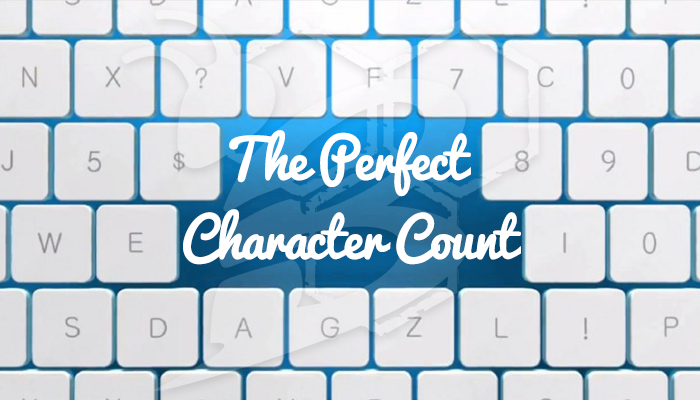There are a lot of moving parts to digital marketing and creating content. There is no magic bullet to creating great content, but there are definitely rules that you should be following in order to show up correctly and increase engagement. Character count comes up a lot with digital marketing, but it's usually only a big deal when you're talking about Twitter. Yes everyone knows that you're very restricted with your character count when it comes to tweeting, but character count has a major impact on many other parts of digital marketing. Let's take a look at some best practices for character count across your digital marketing.
1. Twitter
Like I mentioned before, this is the most obvious one. Twitter has a well known 140 character limit. That doesn't, however, mean that you should use all 140. Research has shown that the ideal tweet is between 71-100 characters long. This gives your Retweeters the ability to add some text when they retweet you!
NOTE: Twitter has recently announced that they will be removing tags and media from this count! That's great news for all of us! That means that when you @ tag someone or include a photo or video, it will not count towards your 140 character limit! Thank you, Twitter. Thank you.
2. Facebook
Facebook is far less strict about their character count, but it's been found that posts with 40 or less characters have much higher engagement.
3. Google+
In order to avoid being cut off in search results, we recommend sticking to a 60 character limit when posting to Google+. Remember, the main purpose of Google+ is SEO so make sure your content looks good in search results!
4. LinkedIn
Your limit for a status update is 600 characters, but remember that brevity is your friend. Sticking to a 100 character limit will prove to increase your engagement.
NOTE: PLEASE leave your hashtags on Twitter, Facebook, Pinterest, and Instagram. They don't work on LinkedIn and they're just obnoxious there. :)
5. Email Subject Lines
A lot has been made about email subject lines and open rates in the past for good reason. It's important to be clever, but also short and sweet. Keeping your email subject lines to 28 - 39 characters will improve your open rates.
6. Blog Posts
The very minimum your blog post should be is 300 words to be picked up by search engines. We, however, just recommend keeping your posts below 2,000 words. It correlates to the time that it takes to read the blog post. At about 1,600 words, it should take a reader about seven minutes to read through. After that point, the reader can lose interest or run out of time to read your content.
7. Blog Titles
Keep your blog titles below 70 characters in order to appear correctly in search results. Titles that are longer than 70 characters can be cut off in search results resulting in a drop in click through rate.
NOTE: Giving your reader an idea of what they're going to read and staying within that 70 character limit is much more important than being clever.
8. URLs
We've all seen the ridiculously long URLs...yeah the superawesomewebsiteforinteriordesigners.com kind of thing. Wow. Just looking at that gives me high blood pressure (and I made it up)! Keeping your URL to 8 characters is ideal, but no matter what it should be easy to spell, remember, and not include numbers or hyphens.
9. Meta Descriptions
The ideal meta description is under 155 characters and include your target keywords. This is important for search engines to index your site as well as click throughs from search results. A meta description over 155 characters will be cut off in search results and will hinder your CTR.Creating great content is one of the most important things that your business can do, but it requires a whole lot more than just throwing up all of your knowledge all over the web. Keep these character count limits in mind any time that you go to write a new piece of content and your content will perform better. For more on this topic, check out THIS BLOG POST by Amber Klein!



.png?width=100&height=100&name=The%20Complete%20Guide%20to%20HubSpots%20Prospecting%20Agent%20(2025%20Edition).png)

.png?width=100&height=100&name=Why%20Were%20Not%20a%20Marketing%20Agency%20(And%20What%20That%20Means%20for%20Your%20Growth).png)